In the digital age, where borders between languages and cultures blur, the translation and localization industry stands as a pivotal bridge enabling global communication. Central to this industry’s capability to effectively handle a myriad of languages is the choice of encoding formats. Among these, UTF-8 (Unicode Transformation Format – 8-bit) has emerged as a universal standard, prized for its flexibility and efficiency in representing characters from virtually any language in the world.
Understanding UTF-8 and Its Importance
UTF-8 is a variable-width character encoding system designed to encode all possible characters (or code points) defined by Unicode. Unlike fixed-width encodings, which allocate the same amount of space for each character and thus can be wastefully spacious or inadequately limiting, UTF-8 dynamically adjusts, using anywhere from one to four bytes per character. This adaptability makes it exceptionally efficient for both English (where characters fit snugly in one byte) and languages with larger sets of characters, such as Chinese, Japanese, and Korean, without the need for switching encoding schemes.
UTF-8’s Impact on Characters, Words, and Languages
The introduction of UTF-8 has had a profound impact on how characters, words, and languages are digitally represented and processed. It ensures that text from any language can be accurately displayed, searched, and analyzed within a single document or software application. This universality eliminates many of the headaches previously associated with handling multiple languages, from character corruption (commonly known as “mojibake”) to the difficulties in text sorting and rendering.
Font Corruption: An Added Layer of Complexity
Font corruption, while less common in the era of UTF-8, remains a potential issue that underscores the importance of encoding and font support in document rendering. Fonts are designed to display the encoded characters, and not all fonts support the full range of Unicode characters. When a document contains characters that are not supported by the selected font, those characters may appear as generic squares, often referred to as “tofu,” or they may display incorrectly altogether. This issue is particularly relevant in documents featuring multiple languages that require diverse character sets. The solution lies in using Unicode-enabled fonts that cover a broad spectrum of characters, further bolstering the argument for UTF-8’s role in promoting global communication. Certain scripts such as Burmese, Thai, Khmer, Hebrew and Arabic may make use of expanded character encoding sets which can corrupt if not managed correctly e.g during Desktop Publishing process or during the localization Website Translation process.
Standardization and Its Benefits
The widespread adoption of UTF-8 has ushered in a new era of standardization in digital communication. It has become the default encoding for web pages, email, and increasingly, software applications, promoting a seamless exchange of information across different platforms and languages. This standardization is crucial for the translation and localization industry, as it simplifies the process of translating documents and software interfaces, ensuring that the final product is accessible to a global audience without loss of meaning or functionality.
UTF-8 in Practice: Notepad and Microsoft Word
Practical applications of UTF-8 in everyday tools further illustrate its importance. Take, for instance, Notepad and Microsoft Word. Notepad, a simple text editor, supports UTF-8 without a Byte Order Mark (BOM), making it a versatile tool for editing text files in any language. This capability is particularly useful for programmers and web developers who work with international code and content.
Microsoft Word, on the other hand, demonstrates the power of UTF-8 in a more complex text processing environment. It allows for the creation of documents that can include a vast variety of languages and special characters, all while maintaining compatibility across different operating systems and versions of Word. This universality ensures that a document authored in one part of the world can be opened, edited, and understood in another, without the need for converting files or losing critical linguistic details.
As the world becomes increasingly interconnected, the importance of a universal, flexible encoding scheme like UTF-8 cannot be overstated. It not only facilitates the global exchange of information but also empowers the translation and localization industry to efficiently bridge language barriers. By standardizing how we represent characters, words, and languages digitally, UTF-8 ensures that our tools, from Notepad to Microsoft Word, are capable of understanding and displaying the rich tapestry of human language. In this way, UTF-8 is not just a technical standard; it’s a cornerstone of modern communication, enabling diversity and understanding in the digital age.
UTF-16 is another Unicode Transformation Format, similar to UTF-8, but with some key differences in its approach to encoding characters. UTF-16 uses 16 bits (or two bytes) as its minimum unit for encoding characters, making it a variable-length encoding similar to UTF-8 but starting at a higher bit length.
Here’s a comparison and overview of UTF-16 in relation to UTF-8:
UTF-16 vs. UTF-8
- Encoding Length: UTF-16 encodes characters using either 2 bytes (16 bits) or 4 bytes (32 bits), depending on the character. This is different from UTF-8, which starts at a single byte (8 bits) for the first 128 characters (mirroring ASCII) and can go up to 4 bytes for characters outside this range.
- Efficiency: For languages that predominantly use characters fitting within the Basic Multilingual Plane (BMP), which includes most of the world’s modern writing systems, UTF- 16 can be more space-efficient than UTF-8. This includes many East Asian scripts, where UTF-16 might use fewer bytes per character. However, for languages that rely heavily on the Latin script, UTF-8 is generally more efficient because it uses fewer bytes for these characters.
- Compatibility: UTF-8 is often preferred for web applications and internet protocols due to its compatibility with ASCII and its byte-oriented processing. UTF-16 is used in environments where its character set efficiency aligns better with the application’s needs, such as certain text processing software and operating systems.
- Usage: Both UTF-8 and UTF-16 are widely supported across various platforms and software, but their usage is influenced by the specific requirements of the application, such as the need for compatibility with legacy systems or the efficiency of character encoding for the languages most commonly processed.
Other UTF Encodings
Besides UTF-8 and UTF-16, there’s also UTF-32, which uses four bytes (32 bits) for all characters. UTF-32 simplifies certain operations by using a fixed length for all characters but is less space-efficient compared to UTF-8 and UTF-16 for most text data.
Standardization and Global Communication
The existence of different UTF encodings highlights the importance of standardization across digital platforms and applications. Each UTF encoding has its advantages and use cases, with UTF-8 being the most prevalent on the web due to its efficiency with Latin characters and backward compatibility with ASCII. UTF-16 finds its niche in environments where its specific characteristics offer advantages over UTF-8, particularly with certain language scripts. The choice between UTF encodings depends on the specific needs of the application, including factors like compatibility, efficiency, and the primary languages being processed.




